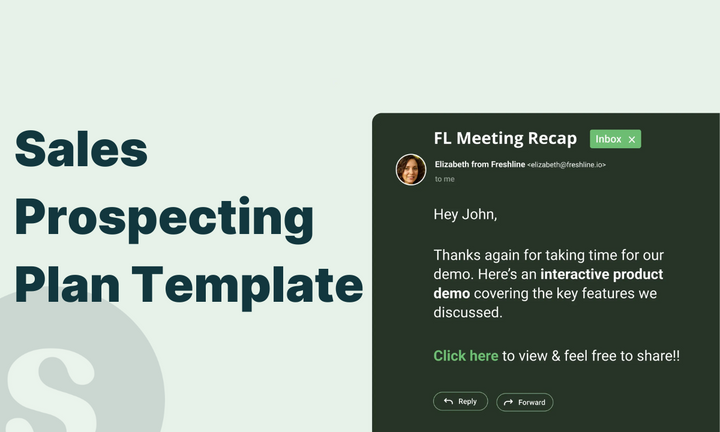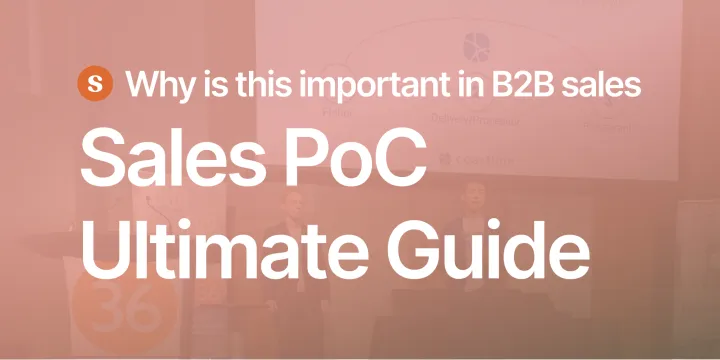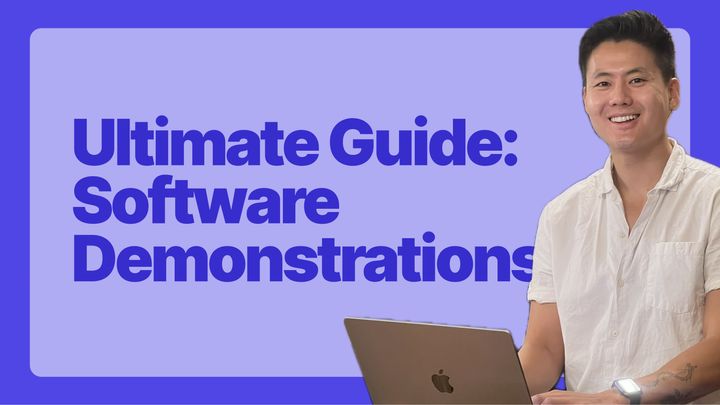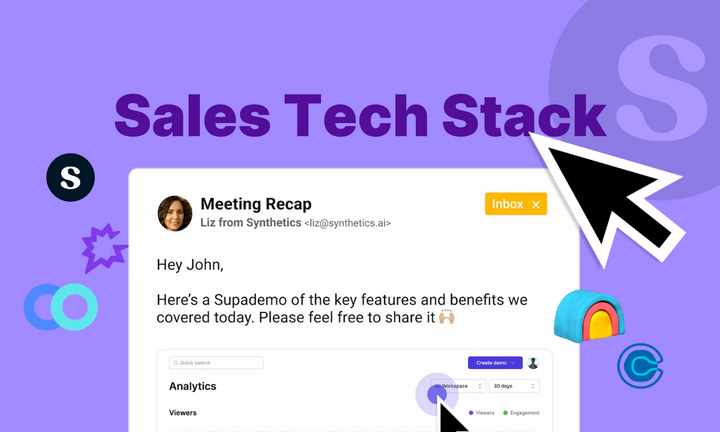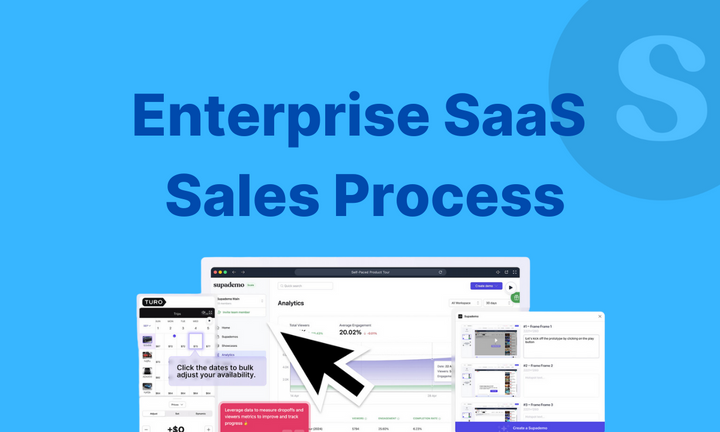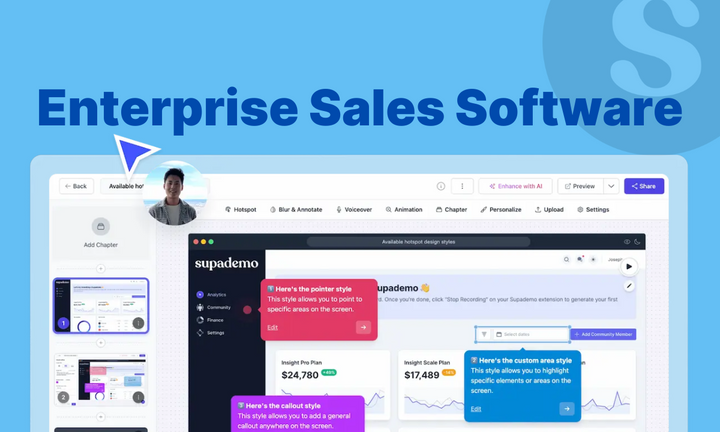Every sale starts with a problem. If a problem doesn’t exist, there is no sale—period. It’s that simple. - Keenan, Gap Selling
Walk onto the sales floor of any office, and you'll sense the desperation: the flurry of calls or the tap-tap-tap of emails being fired off. It feels productive. Yet, underneath, there's frustration, a hope that this batch of outreach will finally bring good news.
It’s high-volume outreach with little focus on planning and strategy.
However, teams that nail sales goals take a different approach. They operate not on hope but on a foundation: a deliberate, proper sales prospecting plan.
If you're thinking, "How much can a sales prospecting plan change things?" The answer is “a whole lot.”
With a sales prospecting plan, every email or message you send out becomes intentional and a reply to a problem.
In this guide, we’ll offer you all the resources you need to create your own sales prospecting plan + a powerful plan template to help you get started in no time.
What is a sales prospecting plan?
It includes your goals, ideal customer profile, outreach methods, messaging themes, and success metrics. In other words, it’s the blueprint you’ll use to avoid winging it and instead prospect with intent.
Thinking, “Why do I need one? We’re doing just fine without a plan.”
Sure. Perhaps you’re closing some deals, but are you working with maximum efficiency and predictability?
Without a plan, you’re left with instinct or scattered tools. The result is inconsistent outreach, low response rates, and missed pipeline targets.
A well-built prospecting plan, on the other hand, lets you avoid:
- Inconsistent outreach: You follow a process that’s tested and measurable with defined sequences and cadences.
- Unclear targeting: A structured ICP and account tiering approach helps you focus on the right accounts, not just any account.
- Weak messaging: Core messaging pillars give you a strong narrative to address pain points and personas.
- Poor accountability: With clear KPIs and tracking mechanisms, you can diagnose issues before they spiral.
In the following section, we will explain how to create your own sales prospecting plan. But if you need a head start, download this fully customizable sample sales prospecting plan template to get started immediately.
The steps for a winning sales prospecting plan
Effective sales prospecting rarely happens by chance. It demands a clear structure; a framework that guides your efforts and builds a predictable pipeline. This framework is your sales prospecting plan
And the absolute first step in creating such a plan is clearly defining what prospecting success looks like for you. Here we go:
Step 1: Set SMART sales goals
A sales prospecting plan starts with clarity: what to achieve, how, and when. That’s why you need to begin your plan with clear goals.
Unfortunately, most teams set ambitious goals that say little. Something like ‘increase outreach’ or ‘improve engagement’ doesn’t qualify as a proper goal.
That’s where the SMART goal-setting framework comes into play. It requires goals to be specific, measurable, achievable, relevant, and time-bound. Here’s how:
- Specific: Define exactly who you're targeting, how, and why. “Generate 30 demo-qualified leads from Series A SaaS companies in North America via outbound LinkedIn” is far clearer than “do more outreach.”
- Measurable: Make sure you can track progress using quantifiable metrics. Monitor response rates, conversion to demo, and pipeline value added per rep.
- Achievable: The goal must be attainable; don’t set impossible goals given your current situation. If your team booked 10 demos last month, 40 next month is not realistic.
- Relevant: The goal must ladder up to meaningful, business-oriented results in the long run. For instance, for us, it could be tying an activity to the adoption of our interactive demo platform across multi-product companies. For you, it’d be something else.
- Time-bound: Goals without a deadline aren’t exactly goals. So, set clear deadlines to create urgency and focus. “In Q2” is better than “sometime soon.” Better still: “Book 15 qualified demos by June 15.”
Once your goals are clearly defined and bound to a deadline, you'll monitor your performance against them.
What’s next?
Step 2: Build your Ideal Customer Profile (ICP)
Building your Ideal Customer Profile (ICP) is the next critical step. This is how you differentiate targeted, valuable messaging from generic spam in increasingly crowded inboxes. Relevance is your only advantage.
To build an effective ICP, start by analyzing your best existing customers. Define key criteria
- Firmographics: Industry, company size, revenue range, funding stage. These establish the baseline for identifying companies most likely to benefit from your solution.
- Job titles and buying committees: Pinpoint who you're selling to. You need to understand the roles and priorities (like a Product Marketing Manager focused on launches vs. a Head of CS handling onboarding) to personalize your message.
- Pain points: Target friction points like ‘low demo engagement,’ ‘repetitive onboarding,’ or ‘sales engineers overbooked building custom decks’ that your solution fixes.
- Tech stack fit: Their existing toolset will tell you about their operational style. You can infer a bias toward modern, self-serve tools if they’re using Intercom, HubSpot, or Notion. Bonus if you integrate with any of these.
- Behavioral signals: Track actions like hiring for product roles, content downloads, and social engagement with related topics; these are breadcrumbs pointing to intent.
But why define these criteria? Because it lets you operationalize your understanding of your most valuable potential customers across your entire go-to-market process.
Clearbit’s CRO, Kevin Tate, chimes in on this: “Take your ICP definition and operationalize it from top to bottom throughout the funnel. For a company that’s connecting their ICP from acquisition through their website, and then down into operations and sales engagement, they are able to create a red carpet for that ICP.”
This makes sure that every interaction, from the first touchpoint to ongoing engagement, is relevant and personalized.
Step 3: Prioritize high-value target accounts
Defining your ICP tells you who could buy from you. But simply fitting your ICP isn't enough because not every potential account is ready or willing to engage. That’s why account prioritization should be the next step in your prospecting plan.
Here's how to go about it:
- Start with the core fit. Identify accounts that match your ICP's firmographic and technographic criteria using relevant tools. Breeze Intelligence and LeadIQ come to mind.
- Then, layer engagement signals. Add first-party data like website visits (high-intent pages), content downloads, and past sales interactions.
- Incorporate intent data. Use third-party platforms that track online research and content consumption to find actively researching accounts.
- Keep your eyes open for trigger events. Watch for news like funding, major hires, or product launches signaling budget or need shifts.
These data sources take you beyond basic fit to identify accounts showing genuine interest and readiness.
As Dawn Colossi, CMO at Intentsify, notes about effectively using intent data in your process: "A repeatable, even automated, process should be in place to take full advantage of intent data: bringing accounts into your targeting strategies across all the tactics you are running—in the right campaigns, at the right stage in the buyer’s journey, using the right messaging."
Follow this approach for timely, relevant outreach directed towards high-priority, "in-market" accounts.
Care for a hack? Create a tiered account list so that representatives focus on where it’ll be more likely to pay off.
- Tier 1 = ICP fit + intent data + recent engagement.
- Tier 2 = ICP fit + light engagement.
- Tier 3 = fits ICP but cold.
We also recommend checking out the BANT Qualification Framework to qualify target accounts.

Developed by IBM in the 1950s, BANT, or Budget, Authority, Need, Timeline, prioritizes prospects based on their ability and readiness to buy. This ensures your team focuses on accounts with the highest conversion potential.
Step 4: Create a multi-channel outreach strategy
Ok, you've identified your high-value targets. Now, how do you win their attention and move them toward a conversation? Not with isolated, single-channel blasts, but with a smart, coordinated multi-channel outreach strategy.
Sales veteran Jeb Blount tells in his book Fanatical Prospecting that successful salesmen “enthusiastically dive into telephone prospecting, email prospecting, cold calling, networking, asking for referrals, knocking on doors, following up on leads, attending trade shows, and striking up conversations with strangers…they don’t make excuses, they don’t complain, they don’t whine”
On a Reddit thread about the most effective prospecting tactics, here’s what the top comment says:

However, just being persistent won’t do. Your multi-channel strategy should hit accounts with the right message, on the right channel, and at the right time. To realize that, you need
- Intelligence-driven channel selection: Use ICP insights along with behavioral and intent data to pinpoint where buyers are and which channels fit their activity and stage.
- Touchpoint sequencing: Plan a logical flow of timely interactions across channels (for instance, email -> LinkedIn -> call/demo) based on buyer signals.
- Personalized messaging: Compose each message to show a genuine understanding of pain points and interests. Focus on dialogue and value over pitching.
- Narrative cohesion: Make sure the voice and message are consistent across all channels for a credible prospect experience.
You can also refer to Neil Rackham’s SPIN Selling here. It is a research-based framework based on four question types: Situation, Problem, Implication, and Need-Payoff.

With SPIN, you compose messages that focus on the prospect’s problems and their implications to build a compelling case for your solution.
The lesson is that you don’t reach out with a selling mindset; you do it to start a conversation. This mindset should reflect on your messaging. Here’s an adaptable outreach message we’d use for email or LinkedIn:
Hi [prospect name],
Noticed [specific trigger event or behavioral insight, like you recently downloaded our guide on X or the news about your expansion into Y market].
Given [their role or company focus] and your likely focus on [related challenge, like improving sales efficiency], I thought you might find [brief, high-value insight or resource, e.g., this quick interactive demo showing how peers solved Z] relevant.
Worth a brief look?
Best, [your name]
Step 5: Create a follow-up cadence that converts
No one wants to be the overeager seller who sends eight emails in four days. Yet, staying at the top of one's mind does require some persistence. The sweet spot for most B2B sales teams is somewhere around seven thoughtful touchpoints over a few weeks—enough to be memorable but not annoying.
But cadence depends more on variety. Alternate between email, LinkedIn messages, calls, and yes, even a personalized video or demo if you’re feeling bold.
In a 2022 r/sales thread, a BDR shared a strategy for long-term engagement:

Mix up the formats, vary the messaging, and resist the urge to just check in or circle back. Add value with every touch. Share a relevant case study. Offer insight into their industry. Even a well-timed meme will humanize your outreach.
Most importantly, make sure your follow-up sequence isn’t rigid. If someone clicks a link or replies but doesn’t book, that’s your cue to pivot. Be responsive, always.

It evangelizes your product inside the buyer’s organization and keeps your message consistent. Supademo is an interactive demo platform that helps you create and share these demos in minutes, as part of your outbound or follow-up flow.
Step 6: Define success metrics (KPIs)
You have to measure to know if all your efforts are working and driving results. That’s why you need KPIs.
KPIs give your team visibility into what’s working at each stage of outreach, so you can double down on effective strategies and cut what’s dragging you down.
Don’t bother with all the KPIs that exist; focus on these core ones:
- Connection rate: Out of all outbound calls or emails, how many reached a real person? This helps you assess data quality and channel effectiveness.
- Open rate (email): The percentage of recipients who opened your emails. It’s a direct reflection of subject line quality and timing.
- Reply rate: Of those who opened your emails, how many responded? This metric shows how compelling your message is.
- Call-to-conversation rate: How many cold calls turn into real conversations? This one’s often overlooked, but important if you're dialing.
- Meetings booked rate: The percentage of total outreach that results in scheduled meetings. It’s one of the clearest signals of prospecting traction.
- SQL conversion rate: How many turn into sales-qualified leads of those meetings? This tells you whether your prospecting is targeting the right accounts and personas.
- Time-to-first-response: How quickly are prospects responding? Shorter response times usually signal better message-market fit or higher intent.
Track these consistently across reps and campaigns, then use them to spot patterns. These KPIs will help you diagnose issues early, coach with context, and continuously improve your prospecting plan.

Step 7: Choose the right prospecting tools
Once you know what to measure, the next step is making it easier to move those numbers.
Modern prospecting is part art and part science; without the right tools, even the best reps burn hours on nothing. A proper prospecting stack takes care of the grunt work so your team can focus on building connections.
You’ll need coverage across a few categories.
- Contact discovery: Tools like LinkedIn Sales Navigator, Apollo, or ZoomInfo identify and segment ideal buyers based on role, company size, tech stack, and more.
- Outreach automation: These build structured, multi-touch cadences at scale, while still personalizing the message. Outreach and Apollo are good options.
- Call tracking and dialers: If your team’s hitting the phones, dialers like Aircall or Orum simplify calling workflows and surface conversation analytics.
But here’s one powerful tool more teams are starting to add to their prospecting playbook: interactive demos.
With Supademo, you can drop a guided product walkthrough directly into your outreach, all without pitch decks, scheduling, or long paragraphs to explain a workflow. The demo becomes the hook. It gives prospects an instant, visual sense of how your solution works, fitted to their role or use case.

Supademo is fast and flexible, which makes it ideal for sales prospecting and enablement. You can record a product flow in seconds, personalize it with dynamic variables, and instantly share it as a trackable link. Add in AI voiceovers, one-click translations, and powerful analytics, and it becomes a scalable way to show why your product matters.
Step 8: Test, learn, and iterate
Even the sharpest prospecting plan won’t stay sharp forever. B2B is not static; buyer behavior changes, messaging goes stale, and tools get better. That’s why iteration is the operating system behind every high-performing team.
Set regular intervals to review what’s working and what’s stalling out. Look at your KPIs across channels, reps, and personas. And don’t rely on dashboards. Your team’s frontline feedback is equally important. Talk about what objections they hear, where prospects are ghosting, and what tools feel clunky or unintuitive.
Use that input to refine your cadences, sharpen your messaging, and even rework your targeting criteria if needed.
The most effective sales organizations treat their prospecting strategy like a product; they constantly ship updates, run small experiments, and learn from every outcome. When you stop treating your prospecting plan as “final,” it starts getting good.
Try Supademo for free today
With your entire outreach mapped out, the only thing left is execution. But when everyone’s inbox looks the same, plain decks and long pitches won’t be enough.
Instead, show, not tell, what your product can do with Supademo. It’s the fastest way to turn your product pitch into an interactive experience they’ll remember.
FAQs
What are effective sales prospecting methods beyond cold calling and email?
There’s more to life than cold calls and email blasts. Try LinkedIn DMs with a personal reference, commenting on your prospect’s posts before sliding into their inbox, or sending over a short interactive product demo they can explore on their own. Webinars, community engagement, and warm intros from your network also work well.
How often should you revisit and update your prospecting plan?
If your win rates are dropping, your ICP has shifted, or your outreach just isn’t landing, don’t wait. Monthly check-ins are a good rhythm, but if something feels off, it probably is. Regular adjustments based on data and feedback will save you from wasting time on stale methods.
What’s the ideal number of touches before moving on from a lead?
There’s no set number, but 7 to 9 touches across different channels is a solid benchmark. If you’re just sending a couple of cold emails and giving up, you’re doing it wrong. That said, if someone’s not interested, respect the signal and move on.
What to do if your prospecting efforts aren’t working?
Step back and look at the whole picture. Make sure you understand the sales process. Find out if your targeting is too broad or if your messages are too generic.
Try tightening your ICP, rewriting your messaging, or experimenting with new channels. And if you’re getting clicks but no replies, it’s worth rethinking the content and timing of your outreach, or testing a different format like video or interactive demos.
How to know it’s time to pivot or optimize your plan?
Consistently low reply rates, long gaps between responses, and declining conversion metrics are signals of something not working out. If your results are stalling and the usual tweaks aren’t doing anything, explore new channels, refresh your messaging, or narrow your focus.


